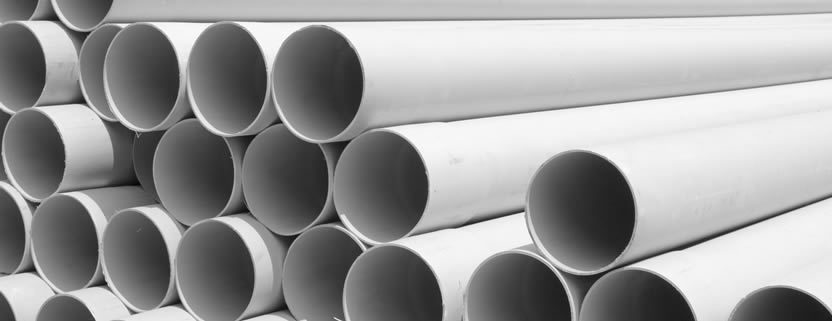The “Pressures” of Choosing Sprinkler Pipe
The average homeowner probably doesn’t have a great deal of knowledge of the types of piping used in sprinkler systems. Most of us are only concerned that the system functions properly when we turn it on. However, when it becomes necessary to install a new system or update an existing one a little bit of knowledge can go a long way.
Prior to the 1960’s most home sprinkler systems used pipe made from galvanized steel, cast-iron, asbestos-cement, or copper water tubing. In today’s world, the product of choice for most modern residential sprinkler installations is thermoplastic. The two most common types of materials chosen are polyvinyl chloride pipe, more commonly known as PVC and polyethylene tubing also known as PE. Which of these materials to put in your own sprinkler system is largely a matter of personal choice, however, we will take a closer look at both and some key factors to consider.
PVC pipe is generally white in color and is a rigid pipe usually available in either 10 or 20-foot sections and connected using couplings and PVC glue. It holds up well to frequent use and can handle high water pressures. Due to its strength and resistance to most chemicals PVC is considered the strongest, most durable of all the thermoplastics on the market today. The typical diameter of PVC pipe used ranges from a ½ inch to 2 inches depending on the water pressure at a given site. PVC comes in many varieties but the two used for residential irrigation are schedule 40 and PR160. Between schedule 40 and PR160, the schedule 40 has a thicker wall and therefore can handle greater pressure but it is also a bit more expensive. So unless you have extremely high water pressure the slightly less expensive PR160 should serve well. Because of the rigid design of PVC, a sprinkler getting crushed can also mean damage to your pipes but there is a solution to this problem. Known as swing pipe, this is a tubing that resembles drip pipe but is thicker walled so as to maintain higher pressure. Typically 2 feet (up to 4 feet as needed) of swing pipe is installed between the rigid PVC pipe and the sprinkler head. This flexible section of pipe not only eliminates pipe damage but also allows some flexibility in sprinkler head location during installation.
Polyethylene pipe is a black flexible tubing that comes in 300-foot rolls and is connected with insert fittings and clamps. Polyethylene pipe is commonly seen in climates where winters are very cold because it has the ability to expand somewhat making an unexpected freeze less likely to cause damage. However, the flexibility of this pipe makes the use of drain valves for weatherization more difficult usually requiring the use of an air compressor. Over all PE pipe is a lower strength pipe than PVC which makes it more susceptible to fatigue over time and has lower pressure ratings. Also, friction and consequently lowering your water pressure output can be caused when insert fittings are not solvent welded before clamping. If too much pressure is lost it can create “dead spots” where little or no water flows from the sprinkler head. Due to increased marketing and ease of installation PE is becoming increasingly popular in temperate zones. However, there are still many questions as to how well PE will hold up to the higher water pressures and more frequent irrigation common in this climate.
At the end of the day, the decision on piping material is all up to the homeowner. Major considerations lying with the the temperature zone in which you live and what materials are readily available in your area. No matter the pipe you choose it should be no less than 10 inches underground and installed by a knowledgeable person. Then with proper maintenance your system should provide years of service.


Leave a Reply
Want to join the discussion?Feel free to contribute!